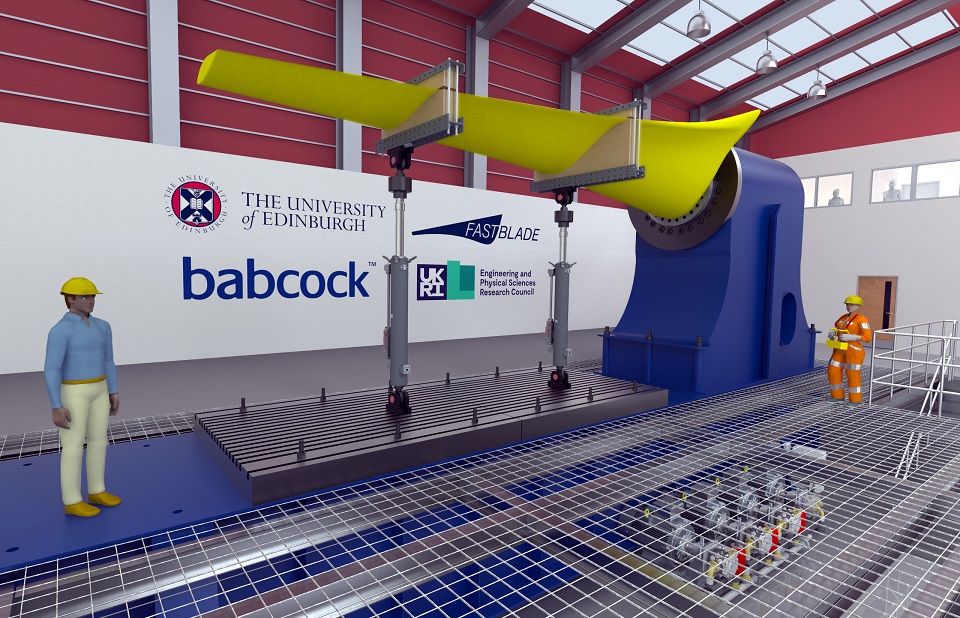Work begins on £4.1m composites research centre in Rosyth
The first major engineering works on a state-of-the-art composite structures research facility will begin in July as part of an industry-academic partnership between the University of Edinburgh and Babcock International Group.

A team of Babcock engineers will shortly begin construction of FASTBLADE’s 75-tonne structural reaction frame and fit-out of the new facility, which based at Babcock’s site in Rosyth.
It will initially be used for lifetime fatigue testing of renewable energy tidal turbine blades, using pioneering technology which will be the first of its kind in the world.
The facility is funded to a value of £4.1 million by the Engineering and Physical Sciences Research Council and the University of Edinburgh, with Babcock appointed as the principal engineering designer.
With its novel technology it will be an international centre of innovation in the research and testing of composite materials and structures for a variety of industries such as tidal energy, marine, transport, nuclear and aerospace.
Cutting-edge digital and hydraulic technology systems developed by the University are more energy efficient than existing processes and will simulate real testing environments. Advanced analytics will assess structural performance in real time.
Working within COVID-19 guidelines, engineers will build and assemble the reaction frame, measuring 16.2m long, 2.5m wide and 7.1m high. It is expected to be complete by December.
The frame will withstand huge forces cycled millions of times over its lifespan as it tests composite structures. It has been designed for future needs as structures such as tidal turbine blades become bigger and materials continue to develop.
FASTBLADE will help meet requirements to develop digital skills in the region as set by the Edinburgh and South East Scotland City Region Deal and is part of a transformational programme approach to skills – going from school leavers through to further and higher education. The City Region Deal also aims to increase research-based collaboration between universities and industry.
The partnership between the University and Babcock has been developing for more than two years with support from Edinburgh Innovations, the University’s commercialisation service.
Professor Conchúr Ó Brádaigh, head of the University of Edinburgh’s School of Engineering, said: “This collaboration is a real opportunity to develop the next generation of engineers that industry will need and will be a resource for apprentices and engineering students to capture real-time data from industrial-scale equipment in the classroom.
“This is a significant milestone towards this unique facility opening for business to the global composites manufacturing market. The reaction frame is the backbone of the FASTBLADE system, holding clients’ structures in place in order to carry out research and testing.”
Neil Young, a technology director at Babcock, said the partnership is about technology, innovation and investing in the next generation of engineers.
Mr Young added: “Babcock likes to work in innovative, collaborative ventures for long-term value and this is a fantastic example of that. We’re bringing together the best engineering minds with technology innovation from the University of Edinburgh.
“We have optimised the facility design in partnership with the University and the next step is the physical build of the facility which, when complete, will be a world-class centre of innovation in composite testing, as well as a fatigue test facility for developers.”
FASTBLADE is expected to be fully assembled and operational in 2021.





















